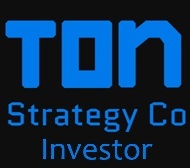Here you go.... The Typical Problem with Revers
Post# of 30081

The Typical Problem with Reverse Splits, and why a Potential Reverse Split of Amarantus is Different
Of note, the Company did not submit a reverse split resolution to a vote of the shareholders at our September 22nd, 2014 shareholder meeting. The reason for this is that under the laws of the State of Nevada, the Company’s Board of Directors can implement a proportional reverse split of the common shares without the need for a shareholder vote. It is absolutely critical for shareholders to understand what this means and why a reverse split of the authorized shares with an equal and proportional reverse split of the common shares outstanding will protect shareholders from the typical outcome seen in reverse splits. Concurrently, it is important to note that the Company is fully aware of the potential negative outcome of reverse splits, and will only implement a reverse split in conjunction with a listing on a national exchange, where history tells us that we typically see an 18% increase in shareholder value, as opposed to typical reverse splits with no national listings that typically lead to an 18% decrease in shareholder value.
I will note here an example of a typical reverse split scenario and compare it with the Amarantus situation:
Typical scenario:
Company X has approximately 750 million shares and 2 billion shares authorized.
The Company submits to a vote of the shareholders to give the Board discretion to decrease the number of outstanding common shares at a ratio of 1:2 to 1:100 and separately submits a request to decrease the number of authorized common shares at a ratio of 1:2 to 1:100.
Following a positive vote, the Company’s Board elects to reduce the number of outstanding shares to 37.5M (1:20), and reduce the number of authorized shares to 500 million (1:4).
The new cap structure is 37.5 million shares outstanding and 500 million authorized.
In this scenario, the Company has effectively increased the potential dilution for shareholders by a factor of over two-fold (2.5x) as the percentage current shareholders own in a worst-case scenario is 37.5:500 (15%) as compared with 750:2000 (37.5%), which is what they originally held.
Amarantus scenario:
Amarantus has approximately 750 million shares (fully diluted) and 2 billion shares authorized (assuming shareholder approval of the increase in authorized shares from 1 billion to 2 billion);
The Company’s Board elects to reduce the number of outstanding shares to 37.5 million (1:20) and reduce the number of authorized shares to 100 million (1:20) – under the laws of the State of Nevada, Amarantus’ Board of Directors can only implement a proportional reduction in the outstanding shares and authorized shares without a shareholder vote;
The new cap structure is 37.5M shares outstanding and 100M authorized.
In this situation, the Company has maintained our shareholder’s percentage ownership at 37.5% of what they originally had, and no potential additional dilution is created. The fundamendal value of our shareholders’ equity is maintain, and in the Amarantus scenario the shares are now listed on a national exchange.
The Company understands that in order for a ‘new, higher share price’ to be respected and maintained following any reverse split will require fundamental value-building events to occur immediately after effecting a reverse split, and with the milestones described above that we expect to occur in the second half of 2014, we believe we can achieve that standard for a positive outcome as well.
 (0)
(0) (0)
(0)